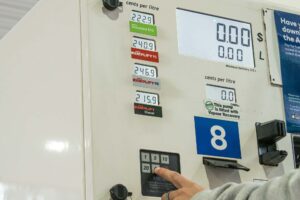November might have been a milestone month for solar, with cumulative PV installations reaching 2GW, but it also marked a reasonably big milestone for wind: 25 years since the Breamlea Wind Turbine, near Geelong in Victoria, was commissioned.
Manufactured in Western Australia by Westwind, the 60kW turbine was installed in November 1987 as a demonstration unit by the State Electricity Commission of Victoria (who were pulled “kicking and screaming into the RE era,” according to one insider who worked on the project), and the Victorian Solar Energy Council (now Energy Victoria) – making it the oldest operating wind turbine in the country (there were some that were older, but they have been decommissioned.)
In 1994, the wind turbine was sold to the Alternative Technology Association as part of the privatisation of Victoria’s electricity supply. Using volunteers, the ATA overhauled its mechanics, controls and electrics and had it recommissioned by the year’s end, before selling it into private ownership a year later to Michael Gunter, one of their members.
According to Gunter, the SECV got 7kW average power out of the Breamlea wind generator, while he and the ATA got 10.3kW average power. “So we have some runs on the board when it comes to productivity,” Gunter wrote on an ABC Science web forum in 1999, “despite the advancing years of the turbine.”
Located on Black Rock Road, the wind turbine is currently owned by local water utility Barwon Water, who bought it in 2003, after it had suffered an electrical generator burn-out, and restored it to service in early 2004. These days, the wind turbine that could delivers around 80,000kWh a year to the grid, with an estimated 90-95 per cent availability.

As Leigh Ewbank writes in the Geelong Advertiser today, much has changed in the sector over the past 25 years – although not much has changed in the current government’s attitude towards renewable energy, it would seem. To see the current state of play for wind energy in the state, have a look at this map of Victorian wind farms, which includes those blocked or abandoned in the wake of the Baillieu government’s introduction of the 2km setback rule and other changes to the planning laws for wind farms.








